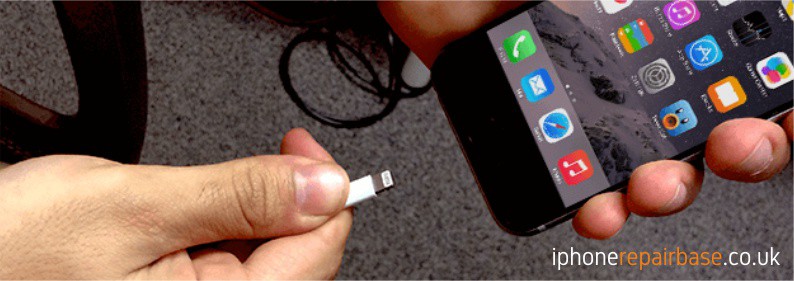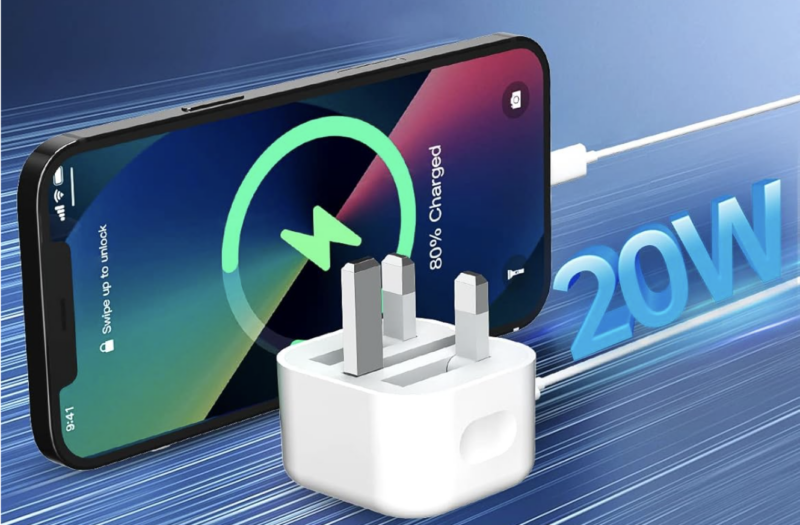
China has already developed 6G technology
China has developed the world’s first 6G field test network, which integrates communication and artificial intelligence, demonstrating that 6G transmission capabilities can be achieved using

If you can’t charge your iPhone or iPad, whether it’s the latest iPhone X or iPad Pro, or an older iPhone 4 or iPad Air, there’s a lot you can try on your own before contacting Apple for help. Sure, sometimes it’s a hardware problem with the Lightning or Dock connector or the battery, but often enough it’s a software issue that a few simple steps can fix. If so, follow along and we’ll get you back up and running in no time!
If your iPhone or iPad won’t charge, one of the first and easiest things to try is a forced restart. Make all the “reboot Windows” jokes you want but sometimes bad bits get stuck and need to be flushed out.
To force a restart:
Press and hold down the Sleep/Wake button on the right side (iPhone 6 or later) or top (all other iPhones, iPods, and iPads) of your device.
While continuing to hold the Sleep/Wake button, press and hold the Home button (iPhone 6s or older) or the Volume Down button (iPhone 7 or newer).
Hold both buttons as the screen turns off, and keep holding them until the screen turns back on and displays the Apple logo.
Funny as it sounds, sometimes outlets or USB ports just don’t work. That’s especially true if you’re plugging into a wall or computer you’ve never plugged into before. It can also happen if an electrical or other problem occurs in your regular outlet or port.
So, make sure you try plugging into a different outlet or USB port and see if your iPhone or iPad starts to charge. If it does, you’re good. If not, keep reading
Like outlets, cables can fail. Sometimes they get chewed up by the wear and tear of travel or even household life. Other times, especially for third party cables, defects catch up with them. If there’s no problem with the iPhone or iPad, and no problem with the power source, you need to check the cable in-between.
Try a different cable. If you don’t have one at hand, try one from a family member, friend, schoolmate, colleague, or even one from the store (make sure it’s a genuine Apple product “see why”). Just get your hands on a cable or two other than your regular and see how goes. If it works, awesome. If not, keep reading.
After trying the easy fixes, it’s time to try the harder ones. In this case, restoring your iPhone or iPad in iTunes. iTunes is a safer bet than iCloud because it actually offloads, re-installs, and reloads your data rather than doing everything in-place and on your device. That can sometimes shake loose bad bits that even a forced restart or iCloud restore can’t. If you use an encrypted backup, it’ll even restore your passwords so you can get back up and running faster.
Connect your iPhone, iPod touch, or iPad to iTunes on your Mac or Windows PC via Lightning or 30-pin Dock connector.
Click on the Device tab at the top left.
Click on Backup.
Wait for the backup to finish.
Click on Restore
Wait for the restore to finish.
When you’re all done, try charging again. If it works, huzzah. If not, there’s one last thing you can try…
Sometimes the root of the cause can go deeper than what an average user can solve on their own. It’s time to contact a professional! Like any other physical connector, the Lightning or 30-pin Dock port is subject to both wear-and-tear and electrical failure. There could also be an issue with your battery.
Hope that you found this guide useful! Please feel free to leave a comment below and share this you’re your friends and family.

China has developed the world’s first 6G field test network, which integrates communication and artificial intelligence, demonstrating that 6G transmission capabilities can be achieved using

It’s high time for Apple to increase the charging power. There are many reasons to love Apple smartphones, but their charging speed is not one
Best solutions for your Apple devices. Prompt, Reliable Service. Cheap and High Quality iPhone Repair Centre.
Monday 10am-5pm
Tuesday 1pm-5pm
Wednesday 10am-5pm
Thursday 1pm-5pm
Friday 10am-5pm
Saturday 10am-2pm
Sunday Closed
We are closed on Bank Holidays.
iPhone, iPad, iPod repairs, Apple mobile phone experts, mechanics – Kesgrave, Ipswich, Suffolk, Woodbridge, Saxmundham, Felixstowe,
Southwold, Aldeburgh, Framlingham, Leiston and all of UK
We are CLOSED from 17 to 27 July.
We will be back to work on 28 July.